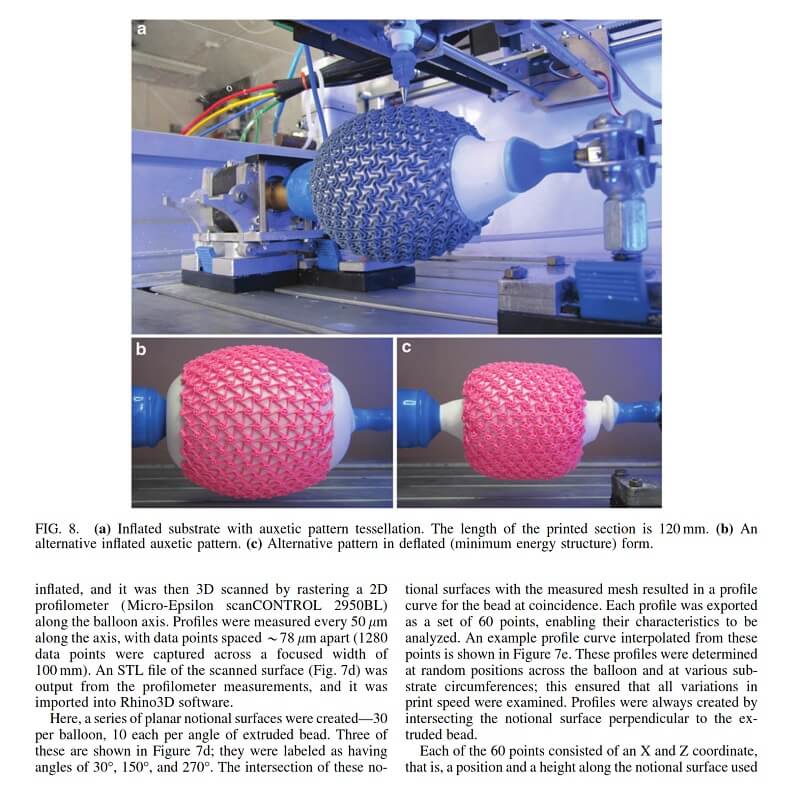3D Printed Structures
Production Techniques for 3D Printed Inflatable
Elastomer Structures: Part II—Four-Axis Direct Ink Writing
on Irregular Double-Curved and Inflatable Surfaces
Fergal B. Coulter,1,2 Brian S. Coulter,3 Emmanouil Papastavrou,4 and Anton Ianakiev5

This article by Fergal B. Coulter, Brian S. Coulter, Emmanouil Papastavrou and Anton Ianakiev, is describing a process for conformal 3D printing onto inflated substrates. The article describes the design and build of a custom-built four-axis 3D printer with the ability to measure the shape of any uneven substrate, and to then accurately extrude a thixotropic silicone onto the substrate by using Direct Ink Writing techniques.

Details of strategies for 3D scanning a double-curved tubular inflated substrate using an industrial triangulation laser measurement device are given. Methods to import scan data and create a digital representation of the surface within the parametric design software Grasshopper 3D are explained. Geodesic print paths are created over the surface of the computed substrate, and these are the basis for calculating 3D printer toolpaths. A constant surface linear velocity strategy is developed, allowing the printer to move the print nozzle at a varying speed over the substrate surface.

The change in speed is correlated with changes in the surface linear velocity of a fourth axis rotation of the variable radius balloon substrate. This ensures that the extruded bead maintains a constant thickness, even while using a constant flow rate deposition. The process is achieved by adapting cartographic techniques to re-project to the desired print paths. The efficacy of this technique is analyzed by 3D scanning a printed patterned balloon, then measuring and com- paring multiple cross-sections of the extruded beading.





























Comments